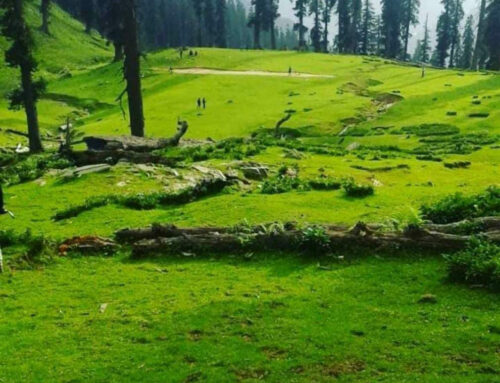
Golconda Fort, a majestic monument in Hyderabad, India, stands as a testament to the city’s rich history and cultural heritage. This mediaeval fortress, built in the 13th century, is an engineering marvel and a must-visit destination for history enthusiasts, architecture buffs, and travellers.
It was originally a mud fort, built by the Kakatiya dynasty in the 13th century, but it was later fortified by the Qutb Shahi rulers between the 15th and 16th centuries. The fort’s architecture is a fusion of Persian, Islamic, and Hindu styles, and it played a significant role in the region’s defence due to its strategic location on a granite hill. Golconda was also historically associated with diamond trade, with its mines producing some of the world’s most famous diamonds, including the Koh-i-Noor.
History
Golconda Fort was initially constructed by the Kakatiya dynasty in 1143 AD. However, its current form was shaped by the Qutb Shahi dynasty, who ruled Hyderabad from 1518 to 1687. The fort served as the capital of the Qutb Shahi kingdom and was a vital center for trade, commerce, and culture.
Golconda fort was the center of a flourishing diamond trade and housed some of the world’s most famous gems. In 1687, the Mughal emperor Aurangzeb successfully laid siege to the fort after eight months of struggle, marking the decline of the Qutb Shahi dynasty.
Key Features
Acoustic Engineering: Golconda Fort is famous for its ingenious acoustic system. A clap at the entrance of the fort can be heard clearly at the top of the citadel, a mile away, which was once used to signal the arrival of visitors or invaders.
Fateh Darwaza: The fort’s main gate, also known as the “Victory Gate,” is a massive structure studded with iron spikes to protect against elephant charges.
Bala Hissar Pavilion: The highest point of the fort, offering a panoramic view of Hyderabad, this was the royal pavilion where rulers often met their subjects and military leaders.
Ramdas Jail: A unique attraction within the fort is the prison where Bhakta Ramdas, a treasury official, was held captive. Legends say he inscribed Hindu deities’ images on the walls of his cell.
Gardens and Palaces: The fort’s interior is filled with lush gardens, fountains, and royal palaces, some of which remain in ruins but showcase the opulence of the bygone era.
Rani Mahal: A ruined structure believed to have been the residence of queens and royal women, it stands as a reminder of the lavish life inside the fort’s walls.
Qutb Shahi Tombs: Near the fort lies the final resting place of the Qutb Shahi rulers, with intricately carved mausoleums that serve as an extension of the Golconda legacy\

Entry Fees and Timings
Entry Fees:
Indian Citizens: ₹25
Foreign Nationals: ₹300
Children (below 15 years): Free
Light & Sound Show Ticket: ₹130 (per person)
Visiting Hours:
The fort is open to visitors every day from 9:00 AM to 5:30 PM.
How to reach
By Air: The nearest airport is Rajiv Gandhi International Airport, about 30 km away. Take a cab or bus from the airport.
By Train: The nearest railway station is Hyderabad Deccan (Nampally), around 11 km from the fort. You can hire an auto or taxi.
By Road: Golconda Fort is well-connected by city buses, autos, and taxis from different parts of Hyderabad

Architecture
Golconda Fort’s architecture is a blend of Hindu, Islamic, and Persian styles. The fort’s design showcases:
- Elevated Structure: Built on a granite hill, the fort’s elevation provides natural protection.
- Crenellated Walls: 10 km-long walls with bastions and gateways.
- Eight Gateways: Ornate gates, including the famous Fateh Darwaza.
- Palaces and Mosques: Intricately carved and ornate structures.
- Water Management: Advanced system for harvesting and storing rainwater.
Places to Visit within the Fort
- Bara Imam: A beautiful mosque.
- Taramati Gana Mandir: A music hall.
- Rani Mahal: The queen’s palace.
- Shila Kala Vedika: A sculpture gallery.
- The Armory: A collection of ancient weapons.
Famous Shopping Markets Near Golconda Fort
While Golconda Fort itself doesn’t have markets, nearby areas such as Laad Bazaar and Charminar offer excellent shopping experiences. These markets are known for bangles, pearls, and Hyderabadi jewelry. Abids Market is also nearby, famous for textiles and handicrafts.
Tourist Information
Audio Guides: Available in multiple languages.
Light and Sound Show: Evening show highlighting the fort’s history.
Booking and Contact Details
Online Booking: Tickets for Golconda Fort and the Sound and Light show can be booked on platforms like the Archaeological Survey of India’s official website or through various travel portals.
Contact:
Golconda Fort Archaeological Office
Phone: +91-40-23512401
Insider Tips
- Wear comfortable shoes for the extensive walking.
- Bring sunscreen, water, and snacks.
- Explore the surrounding area for local shopping and dining.
- Visit during sunrise or sunset for breathtaking views.

Additional Resources-
- Official Website: https://hyderabad.telangana.gov.in/tourist-place/golconda-fort/
- Telangana Tourism: https://tourism.telangana.gov.in/
Nearby Attractions:
Qutb Shahi Tombs: Situated just 2 km from the fort, these tombs are a group of grand museums that belong to the Qutb Shahi rulers.
Charminar: The iconic four-minaret structure is only 10 km away and represents Hyderabad’s rich cultural heritage.
Hussain Sagar Lake: Located around 15 km away, this massive lake is a popular tourist spot with a large Buddha statue in the middle.
Conclusion
Golconda Fort is an awe-inspiring monument that showcases India’s architectural and cultural richness. Its history, design, and significance make it a must-visit destination for anyone interested in exploring the country’s mediaeval past.


